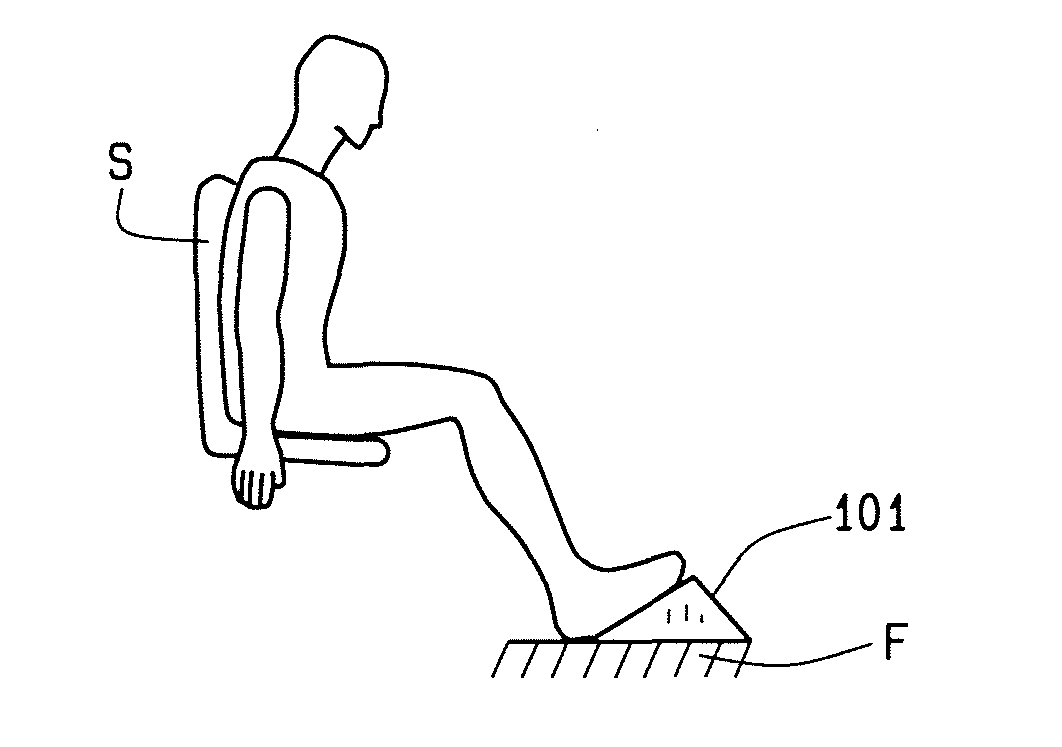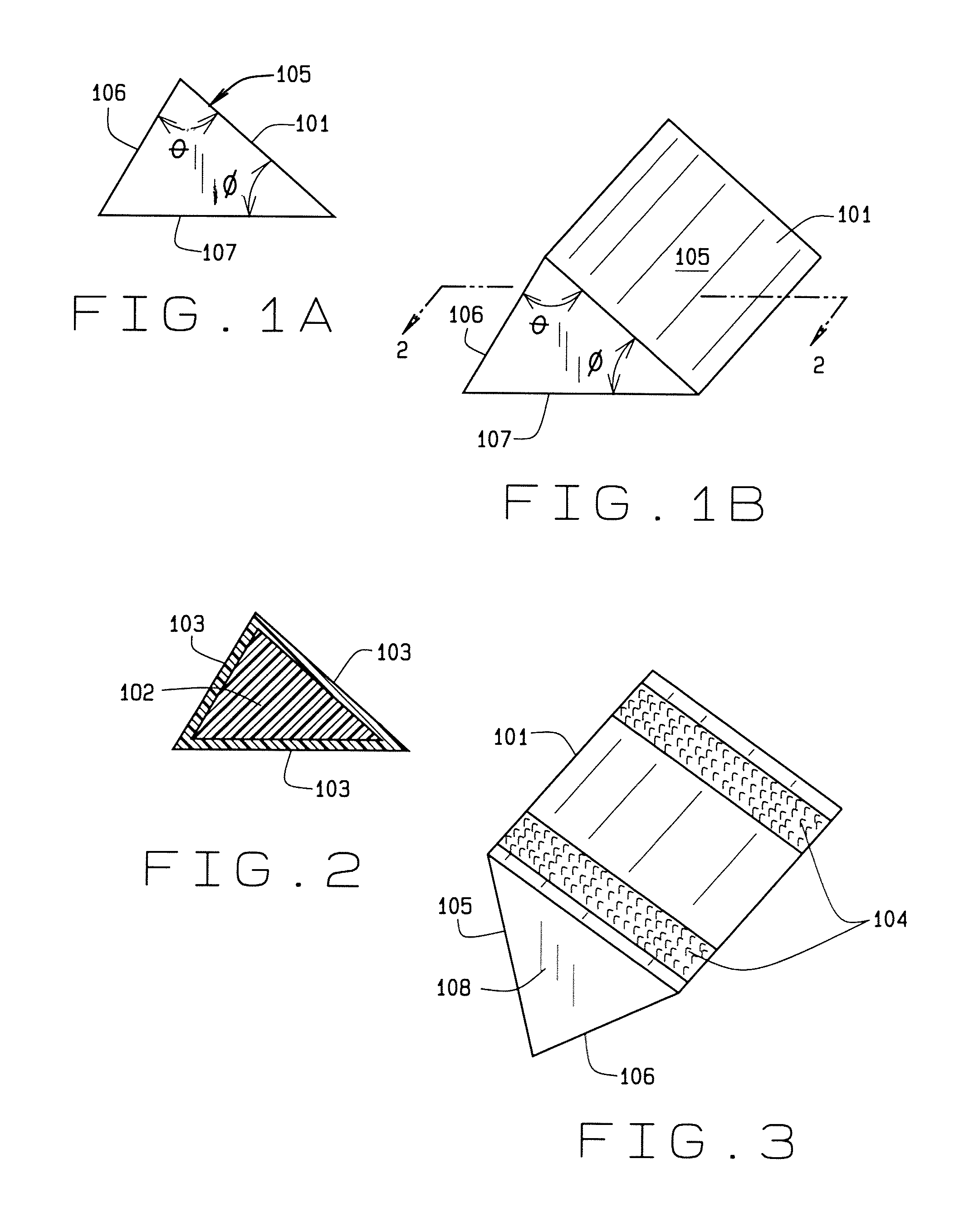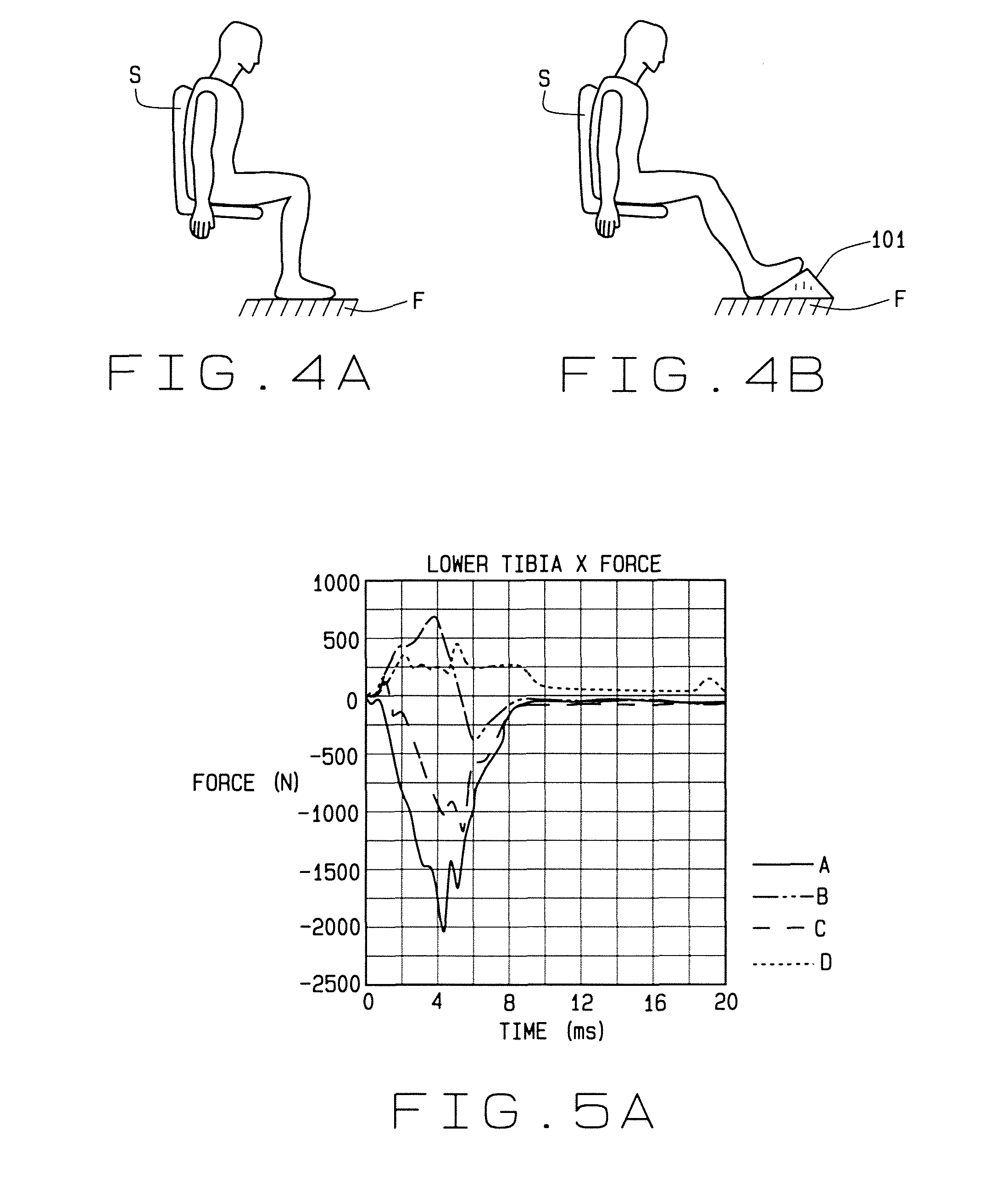Tibia force reduction wedge
a technology of force reduction and wedge, which is applied in the direction of roofs, cycle equipments, pedestrian/occupant safety arrangements, etc., can solve the problems of lack of ability to support adhesion on the surface and difficulty in reducing the force of the tibia, and achieve the effect of convenient and efficient manufacture and marketing
- Summary
- Abstract
- Description
- Claims
- Application Information
AI Technical Summary
Benefits of technology
Problems solved by technology
Method used
Image
Examples
Embodiment Construction
[0033]The present invention overcomes the prior art limitations by providing a tibia force reduction wedge that installs upon a floor or a deck in a vehicle. The invention will be better understood from a reading of the following detailed description of the preferred embodiment and alternate embodiments of the invention in conjunction with the figures in which the sizes and distances between various elements does not represent actual sizes or distances between various elements.
[0034]FIG. 1a provides an end view of the invention of a wedge 101. This wedge attains its shape from a triangular cross section shown in FIG. 1. The wedge has a front surface 105, a back surface 106 forming an included interior angle with the front surface as at Θ, or first internal angle, and a bottom 107 spanning from the front surface to the back surface across the included interior angle, akin to a hypotenuse. The wedge has two ends, as at 108, generally shown as triangular in this figure.
[0035]The wedge ...
PUM
 Login to View More
Login to View More Abstract
Description
Claims
Application Information
 Login to View More
Login to View More - R&D
- Intellectual Property
- Life Sciences
- Materials
- Tech Scout
- Unparalleled Data Quality
- Higher Quality Content
- 60% Fewer Hallucinations
Browse by: Latest US Patents, China's latest patents, Technical Efficacy Thesaurus, Application Domain, Technology Topic, Popular Technical Reports.
© 2025 PatSnap. All rights reserved.Legal|Privacy policy|Modern Slavery Act Transparency Statement|Sitemap|About US| Contact US: help@patsnap.com



